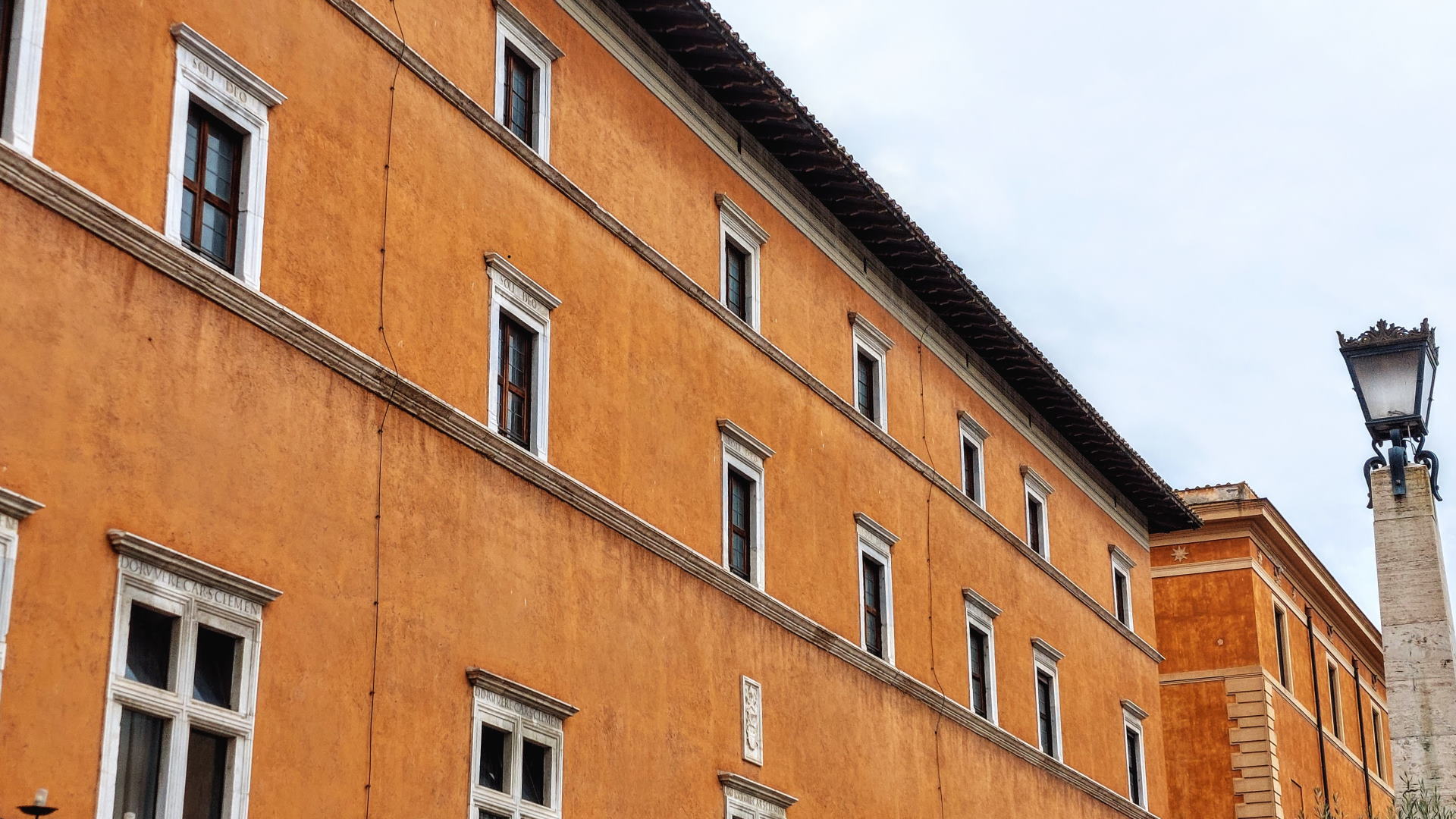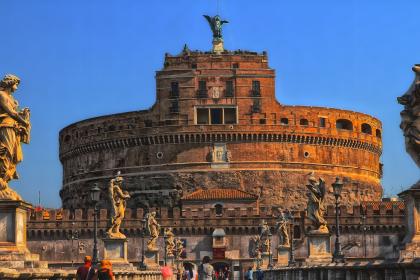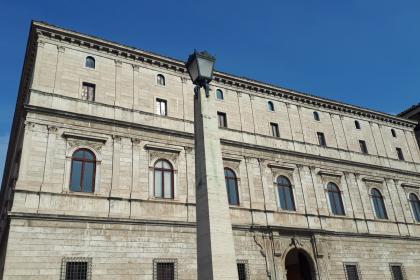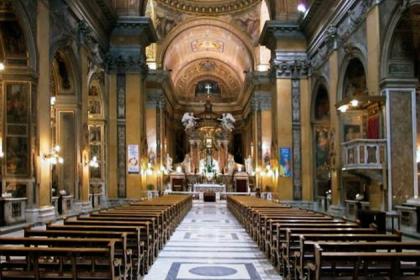
The imposing palace that opens today onto the modern Via della Conciliazione is one of the finest examples of Renaissance architecture in Rome. In the late 15th century, it was the residence of Domenico della Rovere, an influential and very wealthy cardinal from Piedmont, who belonged to the inner circle surrounding Pope Sixtus IV della Rovere and who also commissioned the Chapel of the Nativity in the church of Santa Maria del Popolo.
The palace is generally attributed to the Florentine architect Baccio Pontelli and was built between 1480 and 1490. Respecting the wishes of the cardinal, the architect modelled it closely on the architectural style of Palazzo Venezia, built just a few years earlier. On the façade, the Guelph cross windows of the second floor bear the cardinal’s name, while the rectangular ones on the upper floors show the motto “Soli Deo”. More squat than that of Palazzo di Venezia is the quadrangular tower on the north-east corner, whose crowning, however, is a recent restoration. Some traces of the 16th-century graffiti that, according to Vasari, covered the entire façade are preserved on the left exterior wall.
Praised and admired by its contemporaries, the palace hosted Emperor Charles VIII, who chose to stay here when he visited Rome in 1495, and rivaled in magnificence and beauty the most important Roman stately homes. In the mid-17th century, the palace was purchased by the Penitentiary Fathers of St. Peter’s, who were in charge of confessing pilgrims in the Vatican Basilica. They remained here for nearly 300 years and this is why the palace became known as the “Palazzo dei Penitenzieri”. Today it is owned by the Equestrian Order of the Holy Sepulcher of Jerusalem, who have their headquarters here.
A very important pictorial cycle by Pinturicchio and his school can still be admired in the five halls of the piano nobile: the Hall of the Grand Master is lavishly decorated with trompe l’oeil architectural features depicting a terrace decorated with a sumptuous painted architecture simulating an open loggia, while the Hall of the Seasons retains fragments of a very rare kind of portrayal of the months of the year, each month represented by the myth that gave rise to its zodiacal sign. The most beautiful room, however, is the the Hall of the Demigods, with an astonishing ceiling composed of 63 panels painted on board and enclosed in wooden caissons, in which the artist depicted mythological creatures and fantastic animals with different meanings.
Rione XIV - Borgo

Palazzo Torlonia Giraud

 Condividi
Condividi
Church of Santa Maria in Traspontina

 Condividi
Condividi
Information
Self guided tours only for groups of 20 people
Monday to Friday from 14.30 to 17.00
Advance booking by fax +39 06 69892930 (Equestrian Order of the Holy Sepulchre of Jerusalem)
The request must indicate:
- Day
- Hour
- The number of people participating
- A telephone number
- An email address and/or fax number to receive a confirmation.
 Condividi
Condividi
Locations
To find out about all accessibility services, visit the Rome accessible section.











































